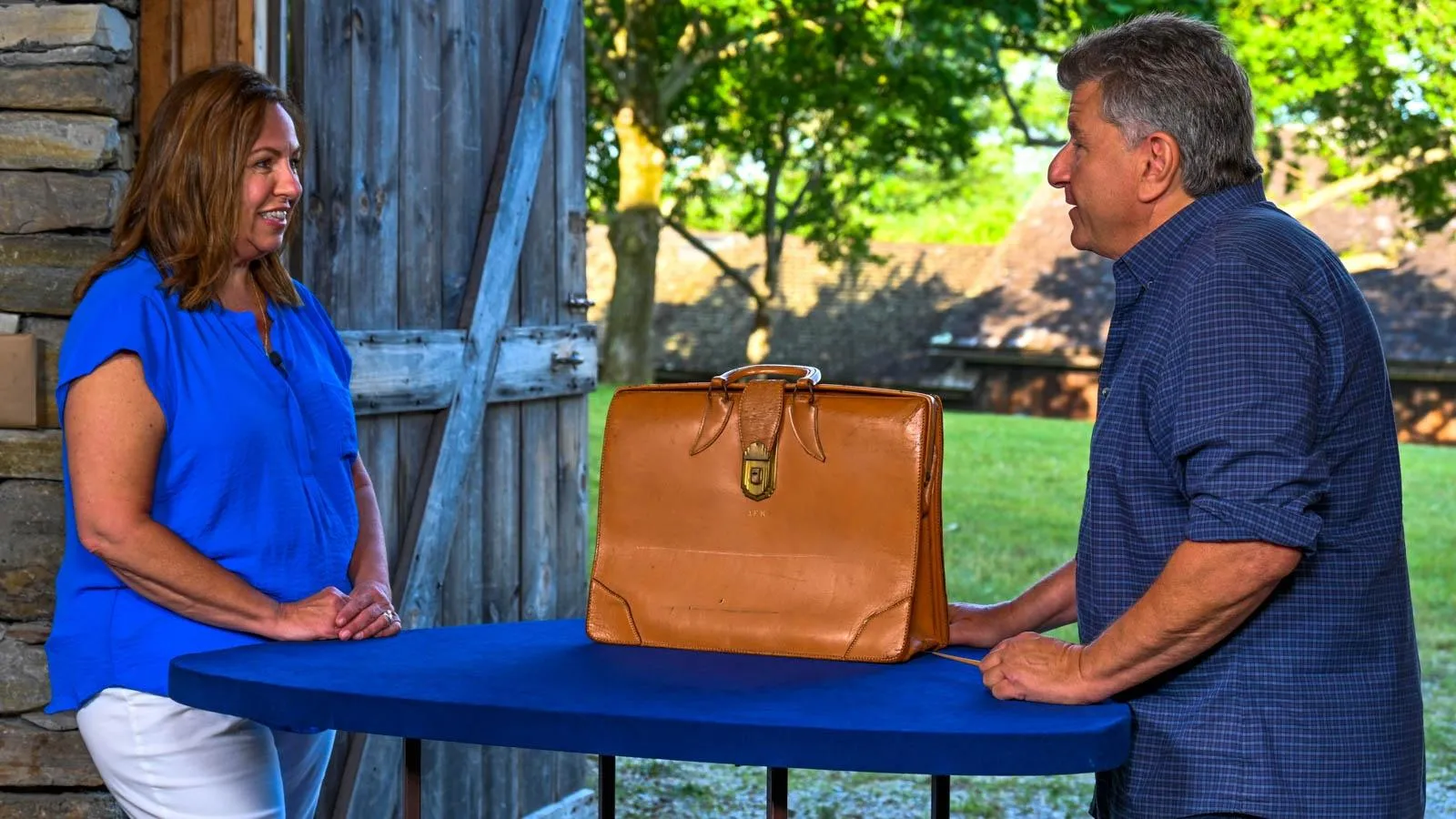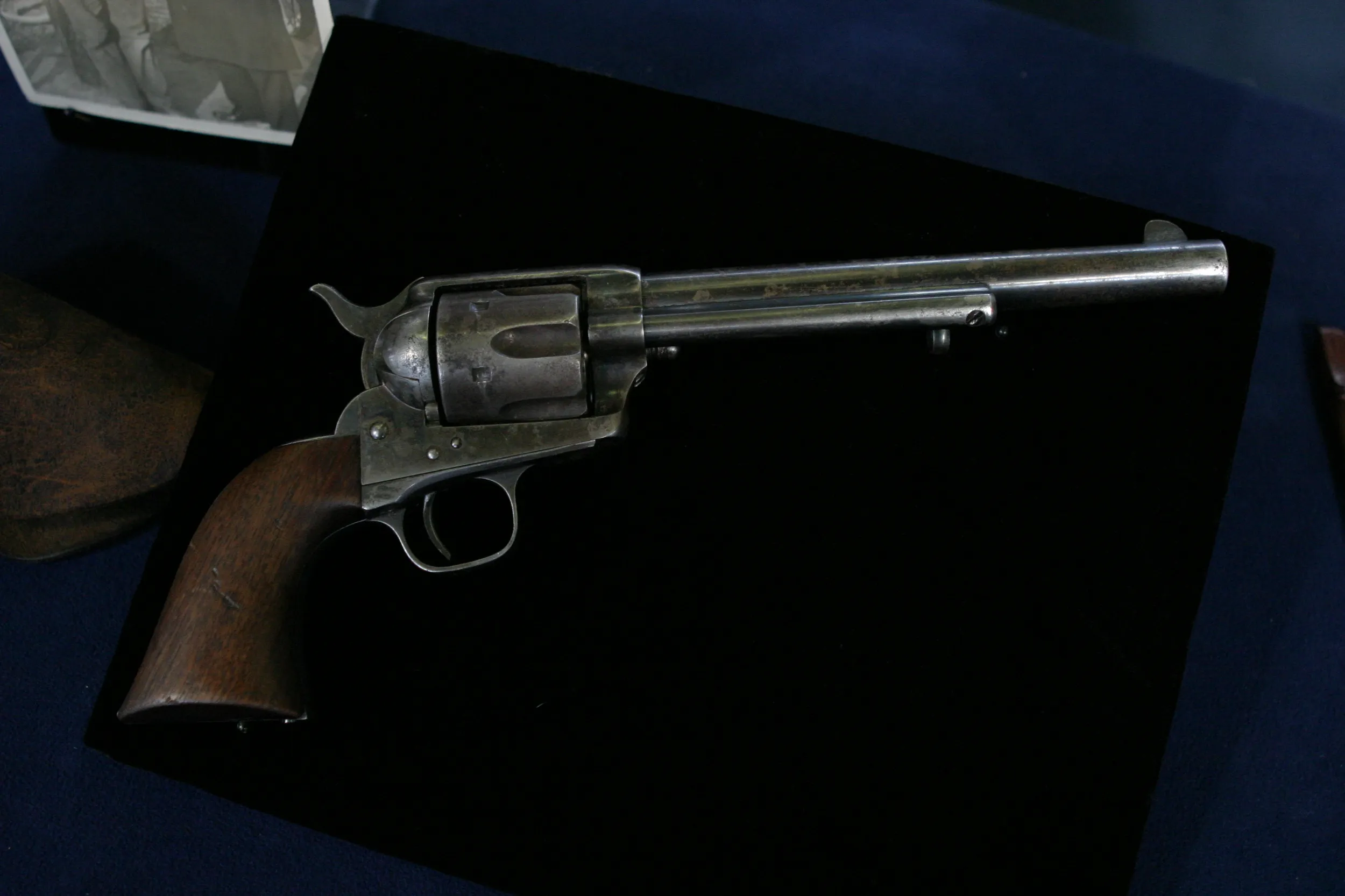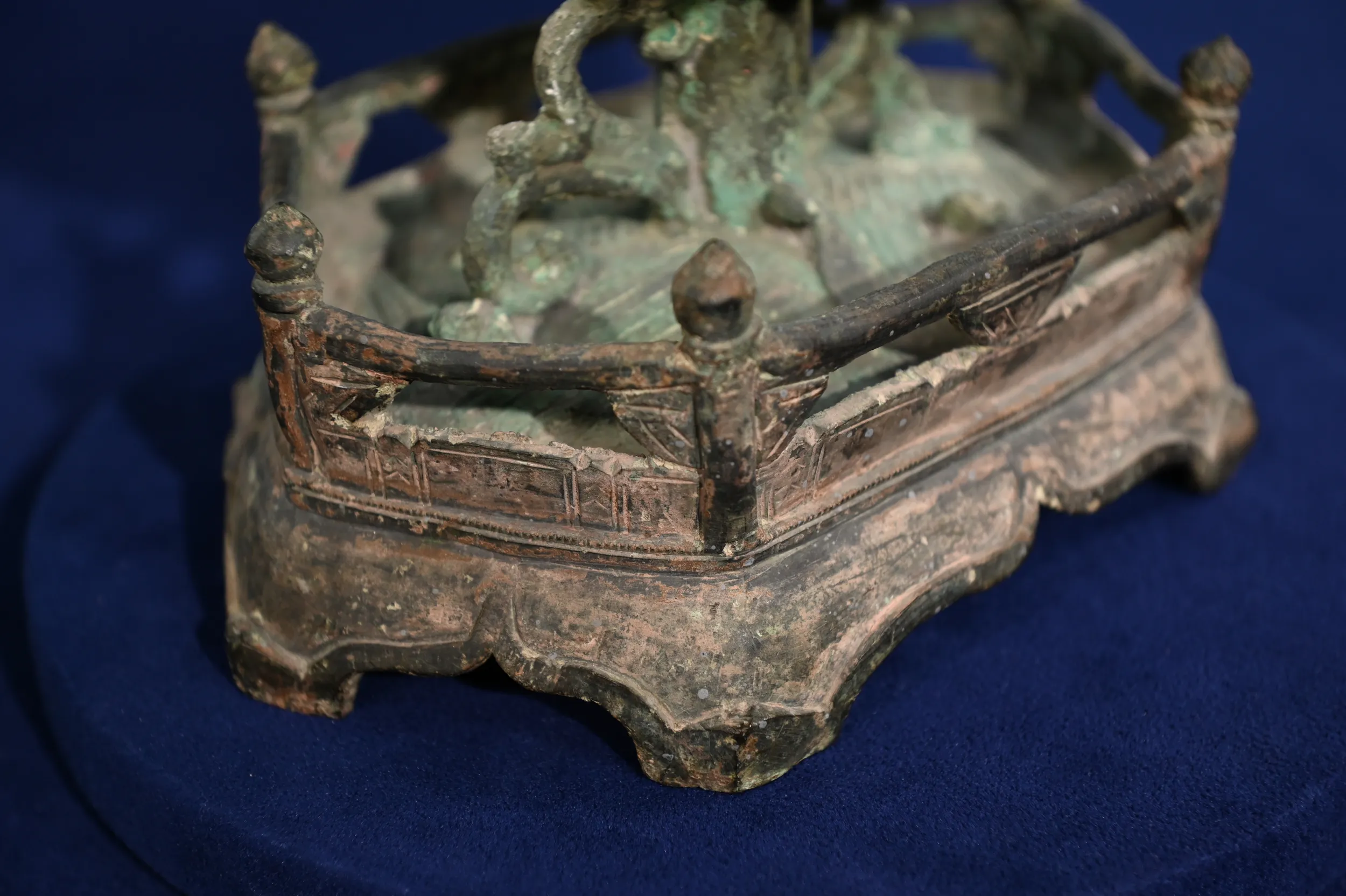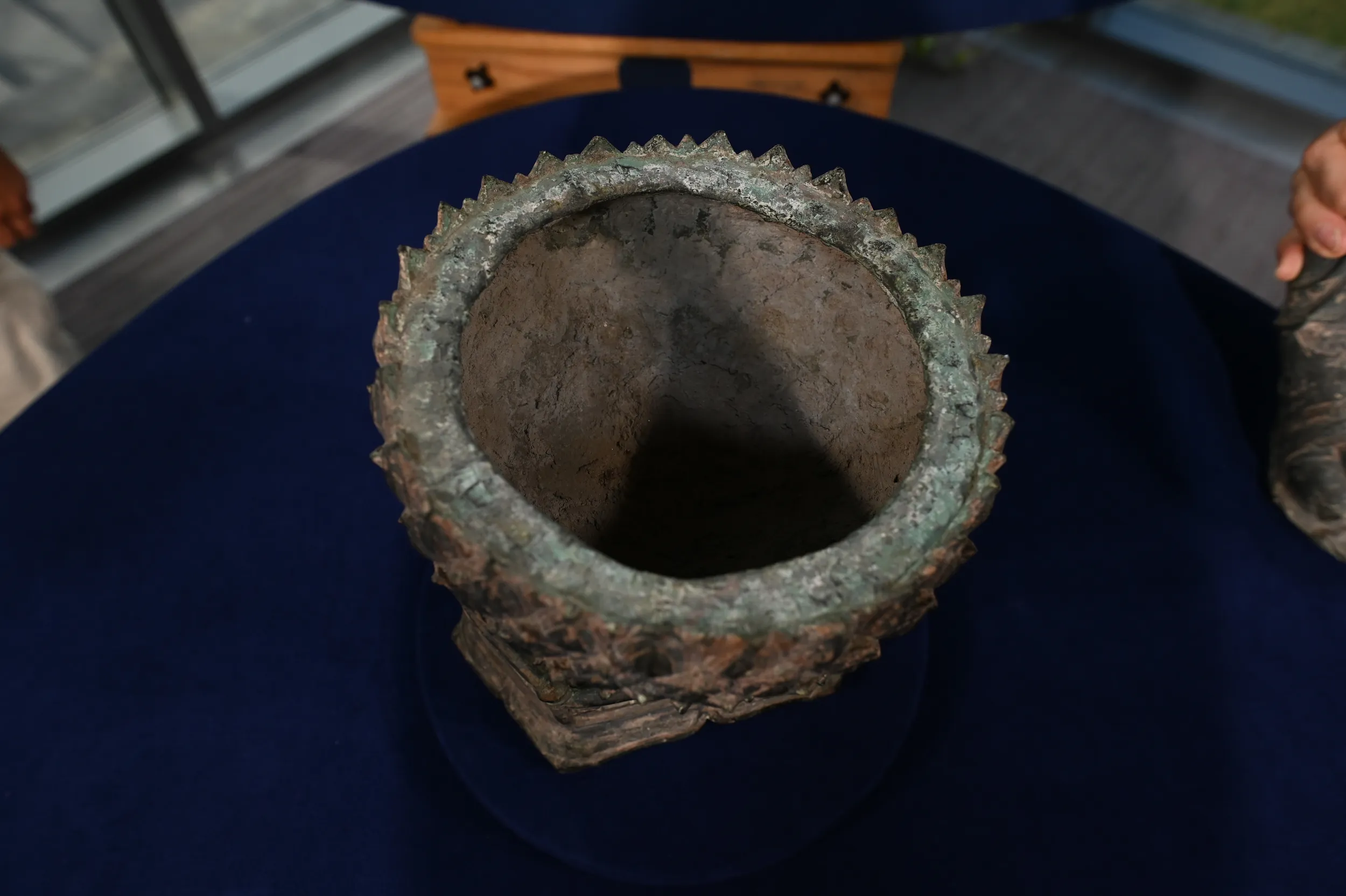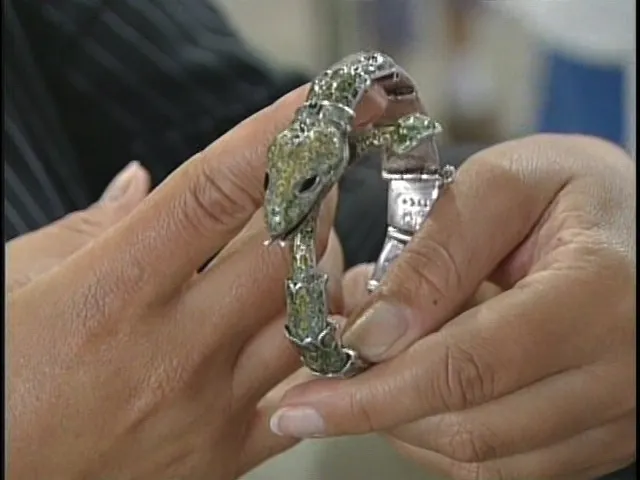GUEST: It came from my parents' house. They had traveled to, uh, China previous to World War II, I believe. I was studying Buddhism in college around 1973 or so, and I asked my mother if I could have it, and she said, "Yes, take it." And it's been with me ever since.
APPRAISER: Here we have an object created for veneration that looks like it's been everything but venerated. (chuckling) (chuckles) Right?
GUEST: Venerated roughly, yes.
APPRAISER: It's been very roughly handled.
GUEST: Mm-hmm.
APPRAISER: And you wonder how did something go from being highly esteemed to something that is leaning?
GUEST: Mm-hmm.
APPRAISER: And the very best you could say is highly marred.
GUEST: Yeah. There's a bowl in there. Um, maybe an incense burner, or some other kind of... thing.
APPRAISER: I'm going to lift this up so everybody can see.
GUEST: Mm-hmm.
APPRAISER: It's actually in three parts. So you have this figure, which is really heavy. And I'm going to put it down here. And then you have on the inside this, this is what you're referring to as the bowl.
GUEST: Mm-hmm.
APPRAISER: And then you have the base.
GUEST: Mm-hmm.
APPRAISER: So I'm going to put this back because it's too heavy for me to hold, but we're going to address each of these aspects. So one of the things you were a, you were asking about, was this used as an incense burner, which might cause some of the things that we're looking at?
GUEST: Yeah, yeah.
APPRAISER: And the answer to that is no.
GUEST: No, okay.
APPRAISER: Okay?
GUEST: (chuckling): Yes.
APPRAISER: It is a base. I mean, yes. Now, it's hollow-- why would it be hollow?
GUEST: Mm... don't know.
APPRAISER: Because if it were solid, it'd be enormously heavy.
GUEST: Oh, yes, of course.
APPRAISER: And incredibly unwieldy.
GUEST: Yeah.
APPRAISER: And even as it is, you can see it's leaning. So just imagine this as h, as solid.
GUEST: Yeah, yeah.
APPRAISER: So it's providing a platform for what is raised and elevated, because it is important.
GUEST: Mm-hmm.
APPRAISER: Which is the figure. So we start at the bottom. What you have here is essentially a walled garden. And then rising from the water, you have this lotus pod...
GUEST: Mm-hmm.
APPRAISER: ...that is oversized, which, this is representative of peace and tranquility.
GUEST: Yeah.
APPRAISER: And an association with a world that's better than the world we're in.
GUEST: Mm-hmm.
APPRAISER: And seated atop this is this figure with a calm, meditative pose. So one of the symbols of peace is right here emblazoned over the heart.
GUEST: Mm-hmm.
APPRAISER: The wan symbol, which is a symbol for peace. People mistakenly refer to this as a swastika, but this has traditionally been a symbol for tranquility. It's, uh, this age-old symbol. In the 20th century, it was misused during World War II.
GUEST: Mm-hmm, mm-hmm. It is worth noting that the Germans flipped it around and made it spin the other way.
APPRAISER: Yes. We would refer to this as a figure dating from the late Ming period.
GUEST: Mm-hmm.
APPRAISER: And we can say that because there are certain elements of this that display a little naïve treatment, a roughness in the treatment, the green patination, this kind of accretions on the surface, which one has to say, "Okay, what are those? Where did that come from?" So it may have been something that was adhering to a material that was over top of it.
GUEST: Mm-hmm.
APPRAISER: Which could have been a burgundy kind of colored lacquer that was infused with gold. Or it could have been any number of things, that somebody maybe had painted it a different color or covered it to protect it during a time where they didn't want it stolen.
GUEST: Mm-hmm.
APPRAISER: Today, I'm sure you want to think about, what is it worth?
GUEST: Sure.
APPRAISER: What do you think it's worth?
GUEST: (clears throat) I don't know. Uh, I would start at $10,000. Just picking it out of the air.
APPRAISER: I think you are right on target. I think it's $10,000 to $15,000 at auction.
GUEST: Really?
APPRAISER: I do.
GUEST: In this condition?
APPRAISER: In this condition, I do. Because people are looking at it today as the potential to bring it back to what it was.
GUEST: I'm not sure I'd do that. I, I like the... (laughs)
APPRAISER: And that is a wonderful statement, because what some people see in the surface is just what life does to all of us.

